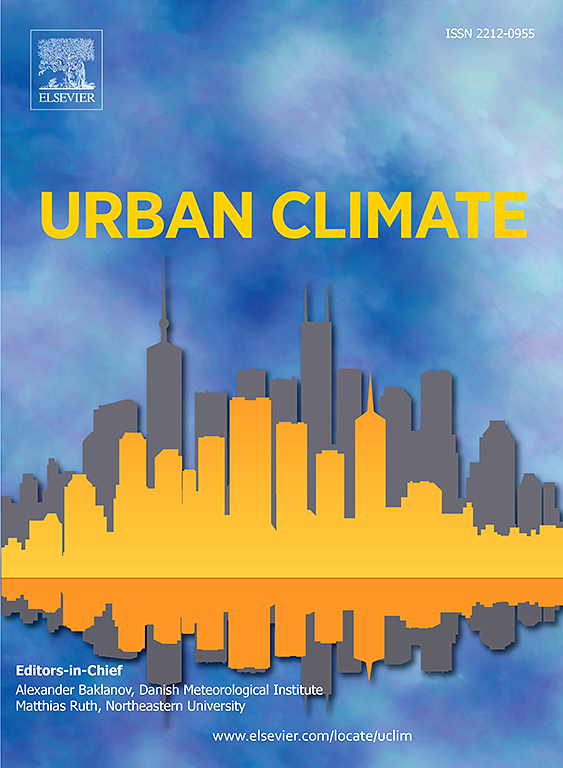Spatial distribution and driving factors of carbon emission in a furnace city using Luojia1–01 nighttime data and optimal parameters-based geodetector
IF 6.9
2区 工程技术
Q1 ENVIRONMENTAL SCIENCES
引用次数: 0
Abstract
Rapid urbanization has increased carbon dioxide (CO2) emissions, exacerbating ecological issues and prompting global shift towards low-carbon development. However, current studies at the county-level face challenges such as incomplete monitoring systems and insufficient statistical granularity, which restrict the detailed analysis of carbon emission spatial distribution and driving mechanisms. To address this, the study utilized high-resolution Luojia1–01 nighttime light (NTL) data combined with the optimal parameters-based geographical detector (OPGD) model, taking Fuzhou, a typical “furnace city” as a case study to reveal the spatial differentiation characteristics and driving mechanisms of carbon emissions at the county-level. The results indicate that carbon emissions in Fuzhou exhibit a “core-edge” spatial differentiation pattern, with the central urban areas having higher emissions than the surrounding counties, and a positive spatial correlation was observed; the proportion of the tertiary production (PTP), the proportion of the primary production (PTP), the urbanization rate (UR), and the level of social capital (SC) are core driving factors of carbon emissions, with dual-factor interactions exhibiting significant bilinear enhancement effects. Based on the carbon emission differentiation characteristics, the study proposes a “five-zone differentiated” governance strategy, which includes low-carbon transformation of the service industry in the core urban areas, green industrial upgrading in high-emission zones, and strengthening the carbon sink function in ecological protection areas. This study provides methodological support and decision-making guidance for refined carbon emission management and low-carbon development planning at the county-level.
基于罗家1 - 01夜间数据和最优参数地质探测器的炉城碳排放空间分布及驱动因素分析
快速城市化增加了二氧化碳排放,加剧了生态问题,促使全球向低碳发展转变。然而,目前县级研究面临监测系统不完善、统计粒度不足等挑战,制约了对碳排放空间分布和驱动机制的详细分析。为此,本研究利用高分辨率罗家1 - 01号夜间灯光(NTL)数据,结合基于最优参数的地理探测器(OPGD)模型,以典型“炉城”福州市为例,揭示其县域碳排放空间分异特征及驱动机制。结果表明:福州市碳排放呈“核心-边缘”空间分异格局,中心城区碳排放高于周边县域,二者呈正相关关系;第三产业比重(PTP)、初级产业比重(PTP)、城镇化率(UR)和社会资本水平(SC)是碳排放的核心驱动因素,且双因素交互作用表现出显著的双线性增强效应。基于碳排放分化特征,提出了“五区分化”治理策略,即核心城区服务业低碳转型、高排放区产业绿色升级、生态保护区碳汇功能强化。本研究为县级精细化碳排放管理和低碳发展规划提供了方法支持和决策指导。
本文章由计算机程序翻译,如有差异,请以英文原文为准。
求助全文
约1分钟内获得全文
求助全文
来源期刊

Urban Climate
Social Sciences-Urban Studies
CiteScore
9.70
自引率
9.40%
发文量
286
期刊介绍:
Urban Climate serves the scientific and decision making communities with the publication of research on theory, science and applications relevant to understanding urban climatic conditions and change in relation to their geography and to demographic, socioeconomic, institutional, technological and environmental dynamics and global change. Targeted towards both disciplinary and interdisciplinary audiences, this journal publishes original research papers, comprehensive review articles, book reviews, and short communications on topics including, but not limited to, the following:
Urban meteorology and climate[...]
Urban environmental pollution[...]
Adaptation to global change[...]
Urban economic and social issues[...]
Research Approaches[...]
 求助内容:
求助内容: 应助结果提醒方式:
应助结果提醒方式:


